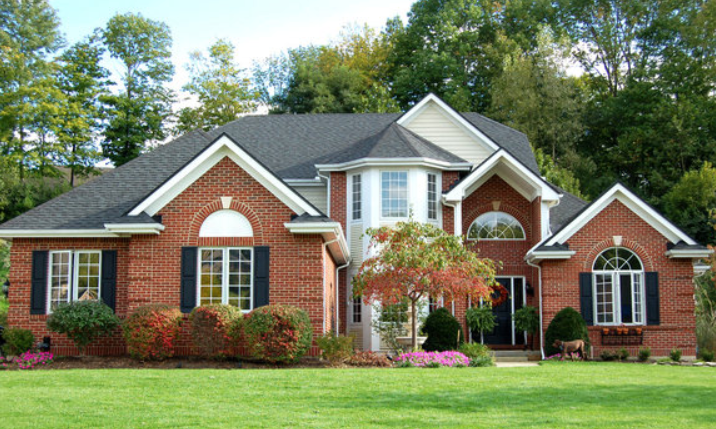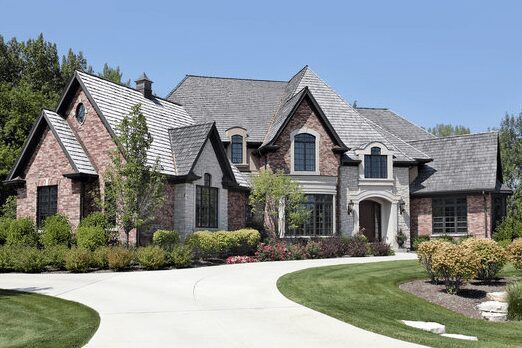
If you’re considering investing in brick homes, you’ve made a wise choice. Brick houses offer numerous benefits, including durability, energy efficiency, and timeless aesthetic appeal.
This comprehensive guide will cover the critical aspects of brick homes, discussing their advantages, potential drawbacks, and other essential details. By the end, you’ll understand whether a brick home is right for you.
History Of Brick Homes
The history of brick homes spans from antiquity to modern times, reflecting this versatile building material’s enduring appeal and functionality. The earliest known use of bricks dates back to around 7000 BCE in the ancient settlement of Çatalhöyük in present-day Turkey.
As civilizations developed, the use of bricks spread across the globe, with notable examples from the ancient Egyptians, Mesopotamians, and the Indus Valley civilization.
The Roman Empire, in particular, contributed significantly to advancing brick-making techniques and popularized fired bricks, which were more durable and weather-resistant than their sun-dried counterparts.

Middle Ages
During the Middle Ages, brick construction gained prominence in Europe, with Gothic brick architecture emerging as a distinct style in present-day Poland, Germany, and Denmark.
The advent of the Industrial Revolution in the 18th and 19th centuries led to further innovations in brick production, making bricks more affordable and accessible for a broader range of construction projects. This period saw the rise of iconic brick buildings, including the famous red-brick row houses in London and the brownstones of New York City.
20th Century
In the 20th century, brick construction continued to evolve, with modern techniques such as cavity walls and brick veneers becoming more common. These advancements increased energy efficiency and design flexibility while maintaining the traditional appeal of brick houses.
Today, bricks are famous for residential construction due to their timeless aesthetic, durability, and energy efficiency. The history of brick houses demonstrates the adaptability of this building material and its enduring significance in the ever-changing landscape of architecture and construction.
The Benefits of Brick Homes
1. Durability and Longevity
Brick homes are known for their impressive durability and longevity. The natural materials used in bricks – primarily clay and shale – make them resistant to fire, termites, and extreme weather conditions. A well-built brick house can easily last for centuries with minimal maintenance.
2. Energy Efficiency
Brick walls provide excellent insulation, which can help reduce energy consumption for heating and cooling. The thermal mass of bricks helps maintain a stable indoor temperature, reducing the need for artificial heating or cooling systems. This means lower utility bills and a reduced carbon footprint.
3. Low Maintenance
Brick houses require little maintenance compared to other building materials like wood or vinyl siding. The natural color of bricks is long-lasting and don’t need to be repainted or refinished. Additionally, brick is resistant to rot, mold, and mildew, making it a low-maintenance option.
4. Timeless Aesthetic Appeal
Brick houses have a classic and timeless appeal that adds to their charm. This architectural style is often associated with elegance and sophistication, making it a popular choice for homeowners who want a distinguished look.
5. Enhanced Resale Value
The combination of durability, energy efficiency, low maintenance, and timeless appeal contributes to the enhanced resale value of brick houses.
Prospective buyers often appreciate the long-term benefits and cost savings associated with brick construction, making brick homes desirable in the real estate market.
6. Fire Resistance
Brick houses offer a higher fire resistance level than homes made from other materials, such as wood. The non-combustible nature of bricks provides an added layer of protection against fire, potentially reducing the risk of significant damage in the event of a fire and increasing the safety of the occupants.

Potential Drawbacks of Brick Homes
1. Initial Cost
As previously mentioned, the primary drawback of brick homes is their higher initial cost compared to other building materials, such as wood or vinyl siding.
The labor-intensive nature of bricklaying and the cost of bricks can make constructing a brick home more expensive.
However, considering the long-term benefits and low maintenance requirements, investing in a brick home could be cost-effective in the long run.
2. Limited Design Flexibility
Brick houses might not be the best choice for unique or unconventional designs. While different brick styles and colors are available, the design possibilities are still somewhat limited compared to other materials like wood or steel.
Modifying or extending a brick home can be more challenging, requiring skilled labor and matching the existing bricks to maintain a cohesive look.
3. Weight and Foundation Requirements
Brick homes are heavier than those made from lighter materials such as wood or vinyl. As a result, they require a stronger foundation to support the weight. This can lead to higher construction costs and may limit your options if building on certain types of soil or terrain.
4. Potential Moisture Issues
While bricks are generally resistant to moisture, poorly constructed or maintained brick houses can experience water penetration, leading to mold, mildew, and damage to the interior.
Proper construction techniques and regular mortar joints and bricks inspection can help prevent these problems.
5. Difficulty in Retrofitting
If you plan to upgrade a brick home with new technology, such as intelligent home features or solar panels, the process can be more challenging than homes made from other materials.
Drilling into brick walls can be difficult and may require professional assistance, adding to the cost and complexity of retrofitting projects.
6. Reduced Sound Insulation
Although brick houses offer excellent thermal insulation, they may not provide the same level of sound insulation as homes made from other materials. If noise is a significant concern, you may consider additional soundproofing measures, such as installing acoustic insulation or double-glazed windows.

Frequently Asked Questions
Are brick homes more expensive than homes made of other materials?
While the initial cost of brick houses can be higher than that of other materials, their durability, energy efficiency, and low maintenance make them a cost-effective investment in the long run.
Can I paint my brick home?
Yes, you can paint a brick home, but using the correct paint and preparation techniques is important to ensure a lasting result. Remember that once you paint a brick home, it may require regular repainting to maintain its appearance.
How do I maintain a brick home?
Brick houses require minimal maintenance. Regularly inspect the mortar joints and bricks for signs of damage or wear. If necessary, repair or replace damaged bricks and re-point the mortar. Cleaning the exterior with a pressure washer can also help maintain its appearance.
Are brick homes energy-efficient?
Yes, brick houses are energy-efficient due to their excellent insulation properties. The thermal mass of bricks helps maintain a stable indoor temperature, reducing the need for artificial heating or cooling systems.
Conclusion
Brick homes have stood the test of time, with solid brick walls and brick exteriors offering sturdy and reliable structural support. Clay bricks have been used for centuries to construct brick structures that provide excellent temperature control, flame retardant properties, and resilience against extreme temperatures and high winds.
As an eco-friendly building material, bricks ensure heat stays inside during winter and provide a cooler interior during summer, making them an ideal choice for homeowners seeking energy efficiency.
While painting brick can enhance the aesthetics of a home, it’s important to consider the potential challenges of exterior remodel projects involving brick repair, repointing, and masonry work.
Additionally, homeowners should remember that the cost per square foot for brick construction may be higher than that of other building materials. However, the long-lasting appeal of original brick homes and their resistance to issues like carpenter ants and foundation problems can make them a worthy investment.
When considering a brick home, it’s crucial to explore various color choices, consult expert advice on remodeling projects, and be prepared to address potential drawbacks such as weep holes, cracks, and humidity.
With proper care and maintenance, brick homes can remain beautiful and structurally sound for decades, making them a valuable addition to any neighborhood.
As you decide whether to invest in a brick home, it’s important to weigh the advantages and disadvantages, considering factors such as budget, location, and personal preferences.
Doing so, you’ll be better equipped to make an informed decision that meets your unique needs and contributes to a sustainable and comfortable living environment.






















